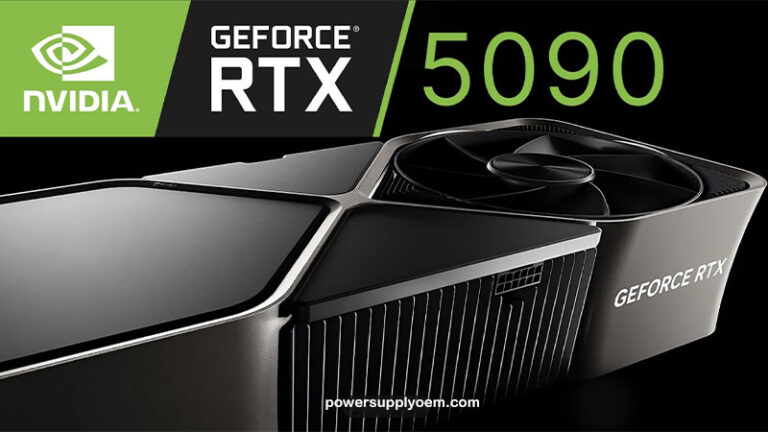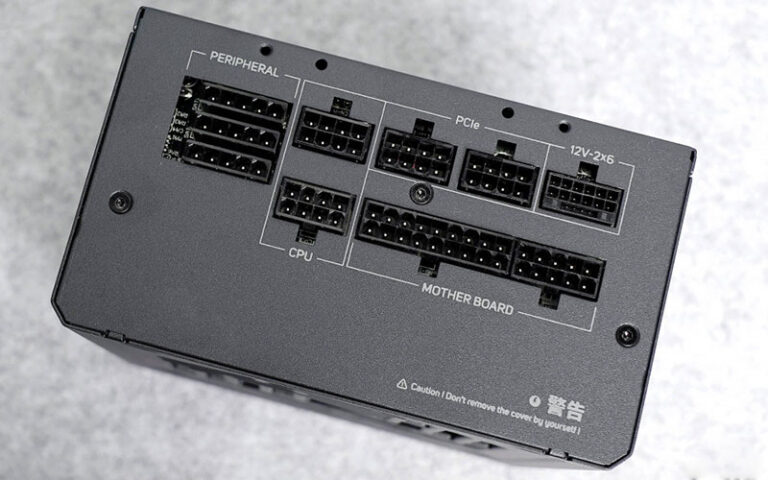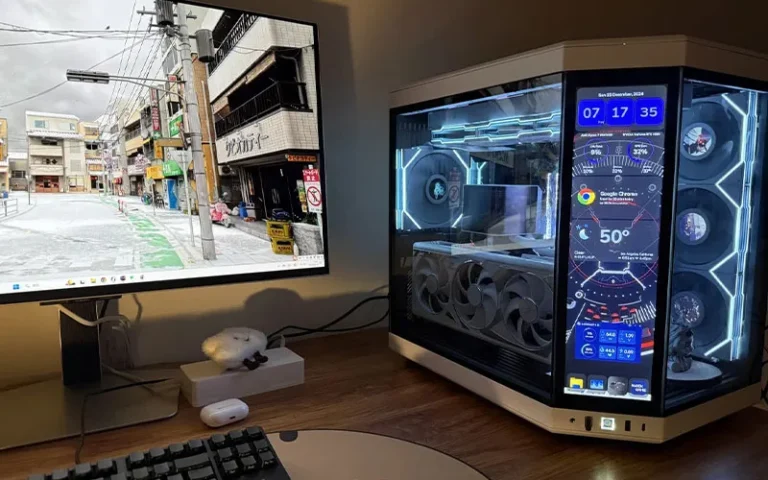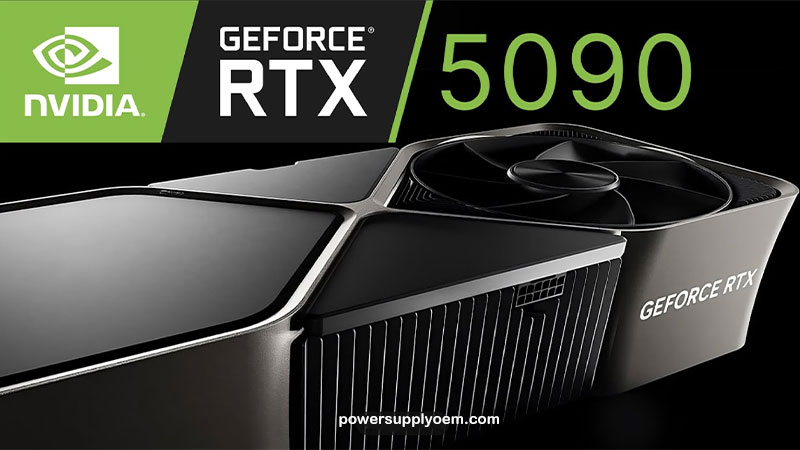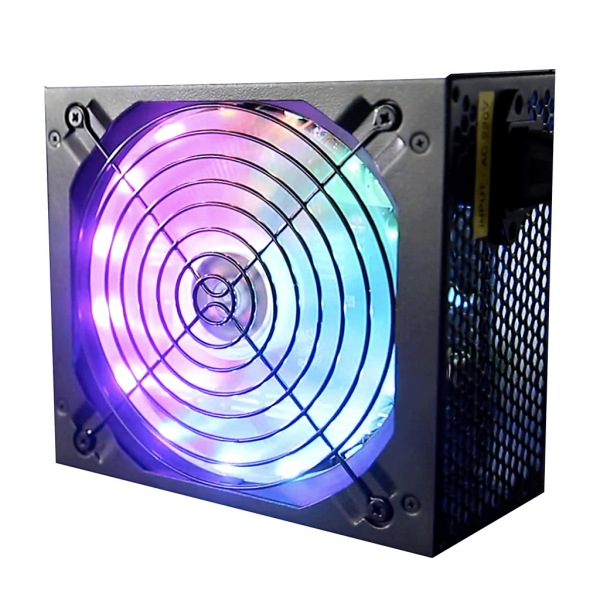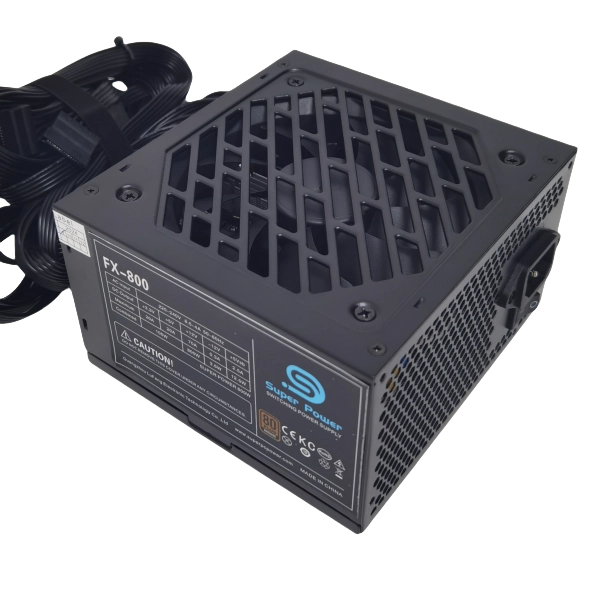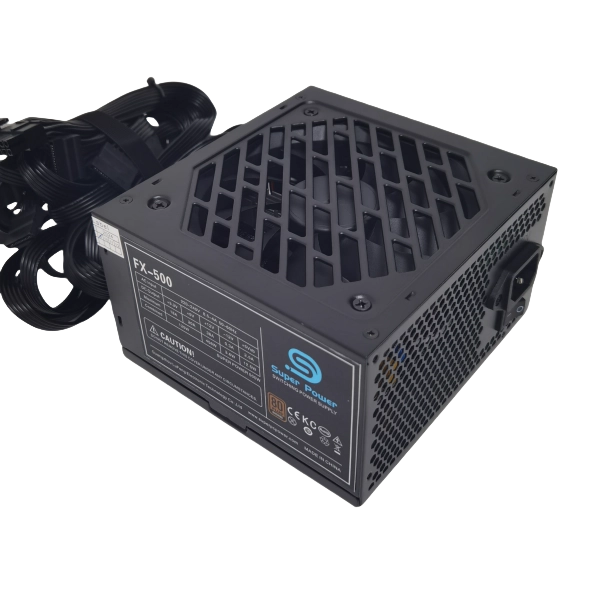-
Building E, No. 65 Xingshan North Road, Liangtian, Baisha Industrial Park, Baiyun District, Guangzhou
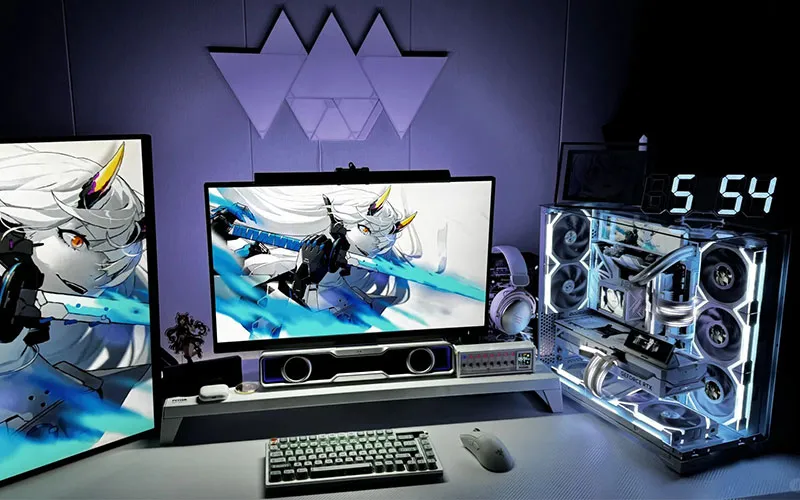
How To Quickly Tell If PC Power Supply Is Failing In 1 Minute
How to Tell If Your Power Supply Unit is Failing: Recognizing the Signs of a Failing PSU
This comprehensive guide will help you tell if pc power supply is failing. A failing PSU can manifest in various ways, from subtle performance hiccups to complete system failure. Knowing how to tell if your power supply is failing is crucial for preventing data loss, hardware damage, and frustrating downtime. We’ll cover the common signs of a failing PSU, explain how to troubleshoot potential power issues, and discuss when it’s time to replace your PSU. This is essential reading for anyone who wants to maintain a healthy and reliable computer system and avoid the headaches associated with power supply failure.
Table of Contents
1. What is a PSU and Why is it Important?
A power supply unit (PSU) is a critical component inside your computer that converts the alternating current (AC) power from your wall outlet into the direct current (DC) power that your computer’s internal components need to function. It’s essentially the heart of your computer’s electrical system. If the computer doesn’t get power, it will not work.
The PSU is vital because it provides the necessary power for all your hardware, including the motherboard, CPU, GPU, storage devices (hard drives and SSDs), and other peripherals. A failing power supply can cause a wide range of problems, from system instability and random shutdowns to component damage and data loss. Understanding the signs of a failing PSU is the first step in preventing these issues. The power supply cannot be ignored.

2. Common Signs of a Failing Power Supply Unit
Here are some of the most common signs of a failing power supply:
- Random Shutdowns or Restarts: If your computer unexpectedly shuts down or restarts, especially under heavy load (like gaming or video editing), it could be a sign that the PSU is struggling to provide enough power. Computer shuts down unexpectedly quite often.
- System Freezes or Crashes: Frequent system freezes, crashes, or blue screens of death (BSODs) can also indicate a power problem. These issues often occur when the PSU can’t deliver stable power to the components.
- Burning Smell: A burning smell coming from your computer is a serious warning sign. This could indicate that internal PSU components are overheating or failing. Immediately shut down your computer and unplug it if you notice this.
- Strange Noises: Unusual noises coming from the PSU, such as buzzing, clicking, or whining, can indicate a problem. The PSU fan might be failing, or internal components could be damaged. Strange noises are never a good sign. Noises, such as a buzz, need to be investigated.
- System Won’t Power On: If your computer doesn’t power on at all, the PSU is a likely suspect. Check the power cable and the power switch on the back of the PSU, but if those are fine, the PSU itself might be dead.
- Intermittent Power Issues: If your computer experiences intermittent power problems, such as peripherals randomly disconnecting or the system momentarily losing power, it could be a sign of a failing PSU.
- Overheating: If your PSU fan is running constantly at high speed, that could indicate a failing PSU.
These are all important indicators, and should not be ignored. If you see signs of a failing PSU, you should act immediately.
3. Troubleshooting Power Supply Issues: Beyond the Obvious
If you suspect your PSU is failing, here are some troubleshooting steps you can take:
- Check the Power Cable: Ensure the power cable is securely connected to both the PSU and the wall outlet. Try a different power cable to rule out a faulty cable.
- Check the Power Switch: Make sure the power switch on the back of the PSU is in the “on” position.
- Inspect Internal Connections: Open your computer case (after powering down and unplugging it) and check all the internal power connectors to ensure they’re securely connected to the motherboard, CPU, GPU, and other components. Look for any loose or damaged power connections.
- Reseat Components: Try reseating components like the GPU, RAM, and expansion cards. Sometimes, a poorly seated component can cause power issues.
- Reduce the Load: If you’ve recently added new hardware, try removing it to see if the problem goes away. This can help you determine if your PSU is underpowered for your current configuration. If you have an underpowered PSU, this could solve the issue.
- Monitor Temperatures: Use software tools like HWMonitor or SpeedFan to monitor the temperatures of your CPU, GPU, and motherboard. Excessive heat can sometimes cause power-related issues. HWMonitor or SpeedFan can help.
These steps can help you rule out other potential causes before concluding that the PSU is the problem.
4. Testing Your PSU with a Multimeter or PSU Tester
For more definitive testing, you can use a multimeter or a dedicated PSU tester:
- PSU Tester: A PSU tester is a simple and inexpensive device that you plug into your PSU’s connectors. It checks the voltage output of each connector and indicates whether the PSU is functioning correctly. This is a relatively easy way to test the power supply. You can use this method to test your PSU.
- Multimeter: A multimeter is a more versatile tool that can measure voltage, current, and resistance. You can use a multimeter to check the voltage output of each PSU connector, but this requires some technical knowledge. Check the voltage of different connections.
Here’s how to test the PSU (basic steps):
- Unplug everything.
- Unplug the PSU from all components.
- Connect the PSU tester.
- Turn on the PSU.
- Check Readings.
These tools can provide more conclusive evidence of a PSU problem than just observing symptoms. You should always check the PSU when troubleshooting. A PSU tester is a useful tool.
5. When to Replace Your PSU: Don’t Wait for Disaster
If you’ve confirmed that your PSU is failing, or if it’s exhibiting multiple warning signs, it’s best to replace your PSU promptly. Don’t wait for it to completely fail, as this could damage other components in your system. Consider replacing your PSU if it shows signs of failure.
Here are some situations where replacing the PSU is recommended:
- Confirmed PSU failure (using a tester or multimeter).
- Multiple signs of a failing PSU (random shutdowns, burning smell, strange noises, etc.).
- The PSU is old (more than 5-7 years) and you’re experiencing stability issues.
- You’re upgrading to more power-hungry components (e.g., a new GPU) and your current PSU doesn’t have enough wattage.
Replacing a PSU is a relatively straightforward process, and it’s a worthwhile investment to protect your computer and data.
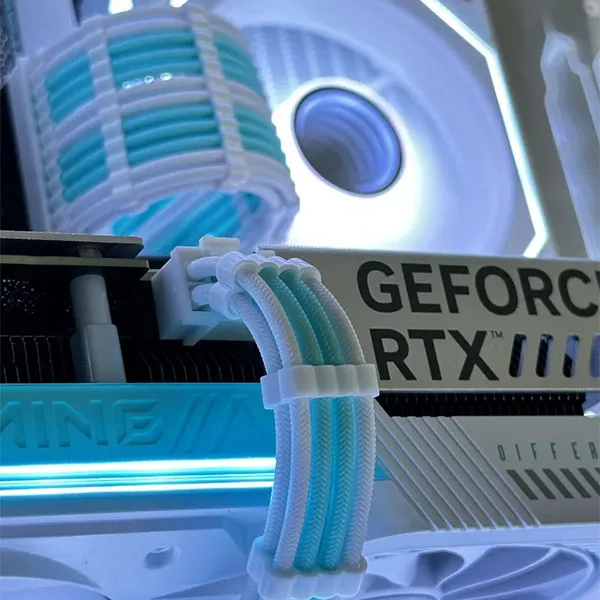
6. Extending the Life of Your PSU: Preventative Measures
While PSUs have a finite lifespan, you can take steps to extend the life of your unit:
- Buy a Quality PSU: Invest in a reputable brand PSU with a good efficiency rating (80 Plus certified) and a long warranty.
- Choose the Right Wattage: Select a PSU with sufficient wattage for your system, plus some headroom for future upgrades.
- Keep it Clean: Regularly clean the dust from your computer case and the PSU fan. Dust buildup can restrict airflow and cause the PSU to overheat.
- Use a Surge Protector or UPS: Plug your computer into a surge protector or, even better, an uninterruptible power supply (UPS) to protect your PSU from power fluctuations and outages. A UPS will also give you time to save your work and shut down your computer properly in the event of a power loss. Protect your PSU from power surges.
- Monitor Temperatures: Use monitoring software to keep an eye on your system’s temperatures, including the PSU.
These preventative measures can help you maximize the life of your PSU and avoid premature failure.
7. Choosing a Replacement PSU: Key Considerations
When choosing a replacement PSU, consider the following:
- Wattage: Calculate your system’s power requirements and choose a PSU with enough wattage, plus a buffer.
- Form Factor: Ensure the PSU’s form factor (ATX, SFX, etc.) is compatible with your computer case.
- Efficiency Rating: Look for an 80 Plus certified PSU (Bronze, Silver, Gold, Platinum, or Titanium) for better energy efficiency.
- Connectors: Make sure the PSU has all the necessary connectors for your components (motherboard, CPU, GPU, storage devices, etc.).
- Modular vs. Non-Modular: Modular PSUs allow you to use only the cables you need, improving airflow and cable management.
- Warranty: A longer warranty indicates the manufacturer’s confidence in the PSU’s reliability.
- Brand: Stick to known brands.
Taking the time to choose the right replacement PSU will ensure your system has a reliable and efficient power source for years to come.
8. OEM Power Supplies: The Benefits of a Direct Partnership
As an OEM (PC power supply, ATX power supply, 80 Plus Gold) manufacturer, we specialize in providing customized power supply solutions for a range of clients, including:
- PC Power Supply Brands: We work closely with brands to help them bring reliable products to the market.
- 3C Supermarkets: Our streamlined manufacturing processes allow us to offer high-quality power supplies at competitive prices.
- Power Supply Wholesalers: We can customize orders and tailor them to your specific needs.
- Agents: We have a dedicated team to assist you throughout the order.
- Large Internet Cafes: We have the capacity to manage large orders and fulfill them promptly.
Partnering with us offers significant advantages:
- Customization: We can tailor power supplies to your exact specifications, including wattage, form factor, connectors, cabling, and branding.
- Quality: We use high-quality components and rigorous testing procedures to ensure the reliability and performance of our power supplies.
- Cost-Effectiveness: Buying directly from the manufacturer often results in better pricing, especially for bulk orders.
- Expert Support: Our team provides technical support and guidance throughout the design and manufacturing process.
Working directly with an OEM manufacturer gives you greater control over the quality and specifications of your power supplies.
9. Customized Power Solutions for Every Need
We offer a wide range of power supply options, including:
- ATX Power Supplies: The standard form factor for most desktop PCs. Our ATX Power Supply is very popular.
- SFX Power Supplies: Compact PSUs for small form factor PCs.
- FLEX Power Supplies: Even smaller PSUs for specialized applications. Check out our FLEX Power Supply.
- Custom Power Supplies: We can design and manufacture power supplies to your precise requirements. Our PC POWER SUPPLY is a top seller.
Our team will work closely with you to understand your specific needs and recommend the optimal power supply solution, whether it’s a standard ATX unit or a completely custom design.
10. Case Studies: Real-World Examples of PSU Failure and Solutions
Here are a few case studies illustrating common PSU failure scenarios and how they were addressed:
- Case Study 1 (Random Shutdowns): A gamer experienced random shutdowns during intense gaming sessions. After troubleshooting, it was determined that his PSU was underpowered for his high-end GPU. Replacing the PSU with a higher-wattage unit solved the problem.
- Case Study 2 (Burning Smell): A user noticed a burning smell coming from their computer. Upon inspection, the PSU was found to be overheating and had visible damage. The PSU was immediately replaced to prevent further damage to the system.
- Case Study 3 (System Won’t Power On): A computer completely failed to power on. Using a PSU tester, it was confirmed that the PSU was dead. Replacing the PSU restored the system to working order.
- Case Study 4 (Wholesaler): A wholesaler was having difficulty sourcing consistent PSUs. They partnered with us, and are now able to easily fulfill their orders.
These case studies highlight the importance of recognizing the signs of a failing power supply and taking prompt action. A faulty PSU can cause serious problems.
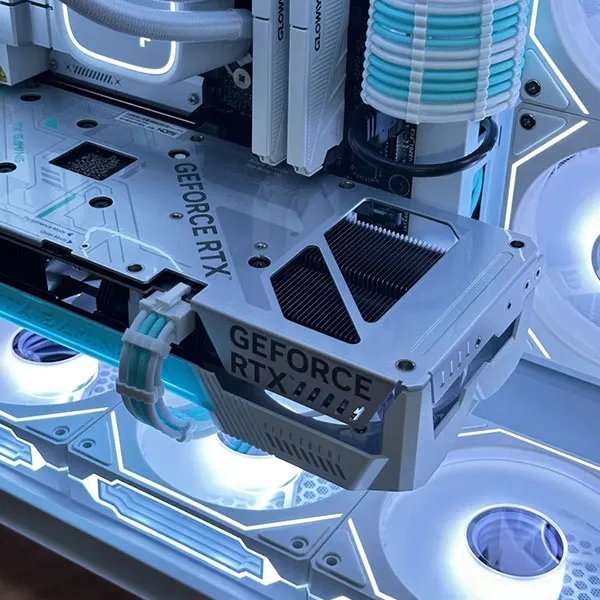
Frequently Asked Questions
What is the most common sign of a failing PSU?
Random shutdowns or restarts, especially under load, are often the first and most noticeable sign of a failing PSU.
Can a failing PSU damage other components?
Yes, a failing PSU can damage other components by providing unstable or insufficient power, or even by sending power surges through the system.
How can I test my PSU?
You can test your PSU using a dedicated PSU tester or a multimeter. A PSU tester is easier to use, while a multimeter requires more technical knowledge. There are multiple ways to test the power supply.
How long should a PSU last?
A good quality PSU can last 5-10 years or even longer, depending on usage, environmental conditions, and the quality of the unit itself.
What does the “80 Plus” rating mean?
The 80 Plus rating indicates a PSU’s energy efficiency. A higher rating (e.g., 80 Plus Gold) means the PSU is more efficient, wasting less energy as heat.
Is it safe to open a power supply?
No, it is not safe to open up a power supply.
Summary
- A failing power supply unit (PSU) can cause a variety of problems, from system instability to hardware damage.
- Common signs of a failing power supply include random shutdowns, system freezes, burning smells, strange noises, and the system not powering on. These can all be signs of failure.
- Troubleshoot potential power issues by checking cables, connections, and component seating.
- Use a PSU tester or a multimeter to definitively test your PSU’s functionality.
- Replace your PSU promptly if it’s failing or exhibiting multiple warning signs.
- Take preventative measures to extend the life of your PSU, such as buying a quality unit, keeping it clean, and using a surge protector.
- When choosing a replacement PSU, consider wattage, form factor, efficiency rating, connectors, modularity, and warranty.
- As an OEM power supply manufacturer, we offer customized solutions tailored to your specific requirements.
- Partnering with us provides access to expertise, quality, cost-effectiveness, and customization options.
- We offer a range of power supplies, including ATX, SFX, FLEX, and custom designs, to meet diverse needs.
- Real-world case studies illustrate the importance of recognizing and addressing PSU issues.
- The information in this guide will help you maintain a healthy PC.
- You should now be prepared to tell if your power supply is failing.

